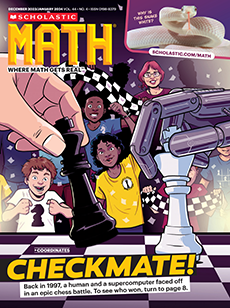Tell students they are about to read an article about the new action movie Free Guy. Ask students: What is a stunt performer? (a trained professional who performs daring acts, often as a career) Would you be interested in this type of career? Why or why not? (Answers will vary.) Choose a few student volunteers to share their responses with the class.
CCSS: 6.EE.B.7, 6.RP.A.1, 6.SP.B.5.C, MP1, MP4, MP56.RP.A.3, 7.RP.A.3
TEKS: 6.6C, 6.9A, 6.5A, 6.12C, 6.4B, 6.4E, 6.4G, 6.5A
